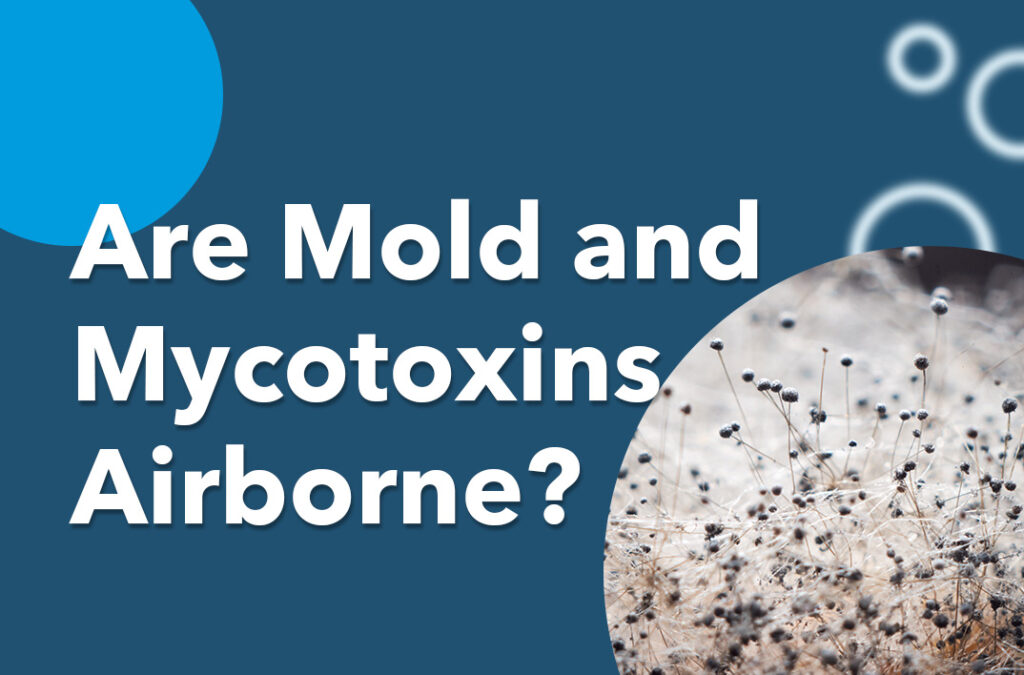Ensuring Compliance With Laws: the Duty of Mycotoxin Evaluating in Quality Assurance
Guaranteeing compliance with rigid laws is paramount for preserving food security, and the function of mycotoxin testing in quality control can not be overstated. Mycotoxins, hazardous compounds produced by particular molds, position considerable health and wellness threats, making their discovery crucial in food production. Adherence to governing requirements, such as those established by the FDA and EU, requires durable screening techniques and modern technologies to recognize and measure these contaminants. By applying complete testing protocols, business can prevent prospective health situations, prevent pricey recalls, and maintain consumer depend on. The complexities of these screening procedures raise vital questions regarding their performance and effectiveness.
Understanding Mycotoxins
Understanding mycotoxins is essential to ensuring the quality and security of farming products. Mycotoxins are hazardous second metabolites produced by certain types of fungis, commonly found in foodstuffs such as grains, nuts, and flavors. These substances can arise at different stages of the food manufacturing procedure, from pre-harvest to storage space, and posture significant wellness risks to both pets and people (Mycotoxin testing Services). One of the most infamous mycotoxins consist of aflatoxins, ochratoxins, trichothecenes, and fumonisins, each related to certain ecological problems and fungal types.
The visibility of mycotoxins in food items can result in persistent and severe health concerns, including liver damages, immune reductions, and carcinogenic impacts. Their discovery and quantification are important elements of top quality control in agricultural and food sectors. The complexity of mycotoxin contamination demands a complex strategy, using sophisticated logical techniques such as liquid chromatography, mass spectrometry, and enzyme-linked immunosorbent assays (ELISA) By recognizing the sources, kinds, and impacts of mycotoxins, stakeholders in the agricultural market can much better carry out preventative procedures and mitigate dangers, ensuring much safer consumption for end-users. This understanding forms the bedrock whereupon efficient mycotoxin monitoring methods are built.
Regulative Criteria for Mycotoxins
Having actually developed a fundamental understanding of mycotoxins and their effect on food safety and security, it is critical to evaluate the regulative requirements regulating their visibility in agricultural products. Governing criteria for mycotoxins are crucial due to the fact that they define permissible restrictions, ensuring food safety and securing public health. Numerous worldwide and nationwide firms have actually set these limitations based on detailed risk evaluations.
The Codex Alimentarius Commission, an international body developed by the FAO and that, offers guidelines and maximum allowed levels for various mycotoxins in food and feed. The Codex has established restrictions for aflatoxins in peanuts, maize, and dried figs, among other commodities. These requirements are usually adopted or adapted by specific nations to fit their particular needs.
In the European Union, Regulation (EC) No 1881/2006 states optimum levels for numerous mycotoxins, such as aflatoxins, ochratoxin A, and deoxynivalenol, in various food items. Similarly, the United State Food and Medication Management (FDA) has actually developed action degrees for mycotoxins like aflatoxins in products such as nuts and grains.
Adherence to these regulative requirements is critical for maintaining market gain access to, consumer depend on, and public health and wellness. Non-compliance can result in significant financial losses and health dangers, emphasizing the significance of stringent mycotoxin testing methods.
Evaluating Techniques and Technologies

ELISA is widely valued for its fast and affordable screening capacities, making it suitable for high-throughput environments. It depends on antibodies to detect details mycotoxins, supplying lead to a reasonably brief time frame. Its level of sensitivity might be limited compared to extra innovative strategies.
HPLC, on the various other hand, masters supplying measurable evaluation with high accuracy and precision. It separates article source intricate mixtures right into individual elements, making it very effective for recognizing and measuring numerous mycotoxins concurrently - Mycotoxin testing Services. This strategy, while more resource-intensive and lengthy than ELISA, provides a greater level of dependability

LC-MS represents the pinnacle of logical uniqueness and level of sensitivity. Incorporating the separation power of liquid chromatography with the detection capabilities of mass spectrometry, LC-MS can spot even trace levels of mycotoxins. This method is crucial for validating the visibility of mycotoxins in governing and forensic contexts, ensuring compliance with rigorous safety and security requirements.
Carrying Out Examining Methods

Incorporating these advanced screening methods into a detailed quality control framework demands a well-structured strategy to implementing testing methods. To achieve this, organizations should first conduct an extensive danger evaluation to determine prospective mycotoxin contamination points within the supply chain. This analysis informs the advancement of a tailored testing method that attends to certain susceptabilities.
Following, establishing standard tasting procedures is vital. Regular tasting ensures that test results are reliable and representative of the entire batch (Mycotoxin testing Services). Abiding by guidelines from regulatory bodies, such as the FDA or EFSA, assists keep compliance and enhances the trustworthiness of the testing process
Training personnel is one more essential part. Team has to excel in both sample collection and the operation of screening devices. Routine training sessions and accreditation programs can guarantee that staff member stay updated with the most up to date strategies and regulatory changes.
Benefits of Mycotoxin Checking
Mycotoxin testing offers various benefits that significantly boost the security and quality of food and feed products. Mostly, it works as a crucial control measure to protect against infected products from getting to the consumer market, thereby protecting public health. By recognizing and measuring mycotoxins such as aflatoxins, ochratoxins, and fumonisins, manufacturers can make certain that their items fulfill strict governing standards, thus staying clear of prospective lawful repercussions and connected expenses.
Furthermore, mycotoxin screening adds to the financial feasibility of food and feed markets by decreasing the danger of large item recalls. The capacity to spot and separate infected sets early in the production process minimizes waste and prevents the monetary losses associated with broken brand name track record. It fosters consumer trust fund and commitment, as consumers are significantly aware of food safety issues and demand greater top quality criteria.
The execution of routine mycotoxin testing additionally like this advertises ideal methods within agricultural and manufacturing sectors. By adhering to rigorous screening protocols, firms can maximize their top quality control procedures, enhance functional effectiveness, and make sure the constant production of risk-free, high-quality products. Finally, the advantages of mycotoxin screening are complex, contributing to public health and wellness, economic stability, and sector stability.
Conclusion
Mycotoxin screening is crucial in making certain conformity with regulatory requirements, consequently keeping food safety and high quality control. Thus, mycotoxin testing continues to be an indispensable component of contemporary food security monitoring systems.
Ensuring conformity with rigorous regulations is critical for preserving food safety and security, and the duty of mycotoxin testing in quality control can not be overstated.In the realm of mycotoxin screening, advanced approaches and modern technologies are pivotal in making sure food security and regulative compliance.Mycotoxin testing provides many benefits that considerably boost the safety and top quality of food and feed products.Mycotoxin testing is vital in making certain conformity with governing criteria, thus preserving food security and high quality control. Therefore, mycotoxin testing stays an important component of modern food security administration systems.